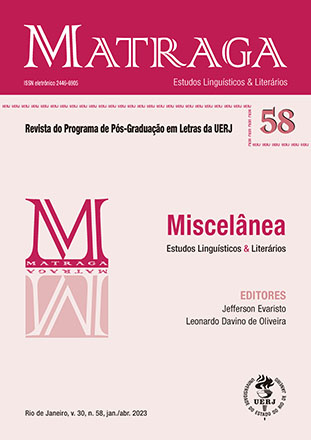The measure of the sad ones
DOI:
https://doi.org/10.12957/matraga.2023.67968Keywords:
Torquato Neto, Tropicalism, Marginal poetry, Death, Suicide.Abstract
This essay raises a hypothetical reading of the poetic works of Torquato Neto (1944-1972) based on the death drive notion, which is in his prose and song lyrics. We start from the premise that the author from Piauí uses in his works the technique of dislocating as a mirror to the category of “space-in-between” created by Silviano Santiago (which we will explore through our argumentation). In the Tropicalist movement he integrated with Caetano Veloso, Gilberto Gil, Capinam and others, the space of betweenness was the one Torquato biogra- phically occupied. Torquato became fixated by the image of vampires, which will read as an annunciation of a fetish of death (much to the liking of the Brazilian romantics of the 19 th century), but also as the “space-in-between” of his sexual orientation – in addition to the clear association to this semi-dead character to the central theme of the essay: death itself. The argument find a dialogue with the poem “Deus Verme”, by Au- gusto dos Anjos (1884-1914), the poet from Paraíba. When addressing the image of transforming and eating the dead body, the poem glorifies the decomposing, like a suicidal would praise the possibility of reaching his own end – as is the case with Torquato Neto.
Downloads
Downloads
Published
How to Cite
Issue
Section
License
Authorization
Matraga – Scientific Journal of the Post-graduate Program in Arts and Humanities of UERJ is authorized to publish the article submitted here, if it is accepted for online publication. It is attested that the contribution is original, that it is not being submitted to another publisher for publication, and that this statement is the expression of truth.
The works published in Matraga's virtual space – Scientific Journal of the Post-graduate Program in Arts and Humanities of UERJ will be automatically transferred, and your copyright is reserved to Matraga. Its reproduction, in whole or in part, is conditional on the citation of the authors and the data of the publication.

Matraga uses license Creative Commons - Attribution-Non-Commercial 4.0 International.





